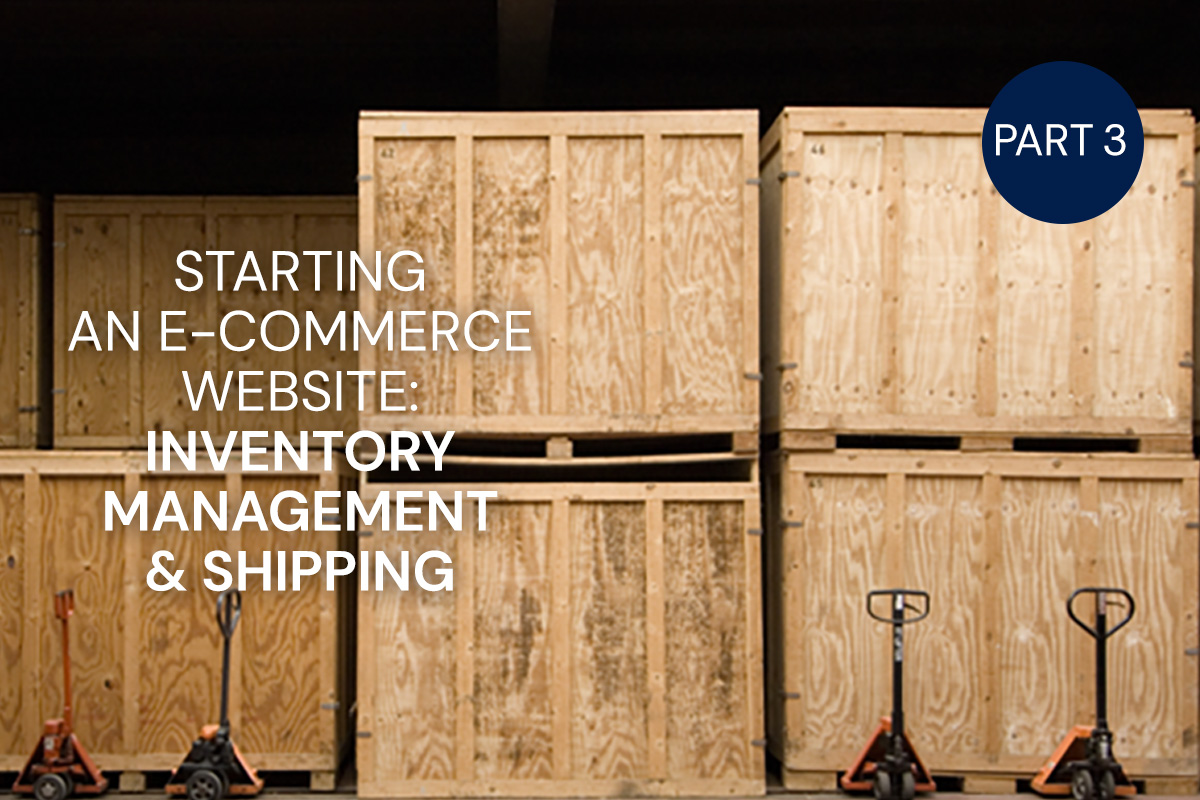In the last part of our 3-part series on setting up a new e-commerce store, we’re talking about inventory management and shipping integration. We haven’t seen an e-commerce solution in the last few years that didn’t offer some kind of inventory management, but some are more robust than others. And shipping integration is where some shopping cart provider really fall down on the job.
What is Inventory Management?
Not surprisingly, inventory management covers everything from ordering, to storing, to shipping of the products in your store. Clearly, if you’re not tracking inventory, you run the risk of disappointing customers, ordering too much product that will only gather dust, and paying for storage of said overstocked products to boot. Another consideration is that you may be selling across multiple channels: on your website, at your brick-and-mortar store, at a tradeshow or event, or even on Facebook. If you’re just selling products on a website, great! You can pick a shopping cart solution based on other factors. If you are selling in different venues, then you’ll need to pick a fairly sophisticated solution. Two we can wholeheartedly recommend are:
WooCommerce (an open-source solution that works with WordPress): One of the challenges of inventory management is products with multiple options. We have yet to find a product configuration setup that WooCommerce can’t handle, though it certainly can be cumbersome to set up products with, say, 7 options. Bulk editing plugins can help with that. And speaking of plugins, we know of at least one plugin, Stitch, that will allow you to manage inventory across multiple channels, synchronize stock quantities across all sales channels, and view sales and profit reports for your WooCommerce orders. You may even wish to synchronize your inventory with all of your vendors. If they publish their inventory via FTP, SFTP, HTTP, API, XML, etc., a plugin can run inventory updates on demand or on an automated schedule.
Shopify (a third-party e-commerce platform): Shopify’s built-in inventory management allows you to set quantities of your products, manage product variations, set up automated reminders to place orders or to manufacture more product when the count dips to a certain number, and update inventory numbers when you receive a new shipment. It even lets you use bar codes. But if you are selling across multiple channels, a wide array of plugins are available to add functionality.
What do we Mean by Shipping Integration?
Often, we find that people plan to ship their products, but they haven’t done the legwork to figure out how they’re going to do it. If you want to offer free shipping, that’s fantastic, and doing so will probably earn more customers. You might also choose to use “table rates” for shipping. Table rates allow for multiple shipping rates based on the product’s destination, have multiple rates per zone, and add rules based on product weight, number of items, shipping class, and price. But unless you’ve engaged with a fulfillment partner who will handle all aspects of shipping your products, you will still need to know what things weigh and what size box they fit into.
Out of the box, WooCommerce (as well as most other e-commerce platforms) offer built-in, basic shipping options. With WooCommerce and Shopify, you can add plugins that can streamline nearly every portion of the shipping process. For example:
- Plugins from the major shipping companies that provide real-time rate calculation based on estimated weight and customer location.
- Plugins that automatically handle label printing, drop shipment notifications, email notifications, and so on. (Note that this is not a basic feature included in every platform!)
- Plugins that synchronize with your fulfillment system. As orders are placed in your store, a plugin will automatically route these orders to the correct vendors.
You don’t have to pick either of these platforms, by any means. It’s more important that you consider exactly how your business process needs to flow, and whether your e-commerce platform can handle those requirements. Need help evaluating a shopping cart? We’d love to help.
Read Part 1: Product Photography
Read Part 2: Credit Card Processing






